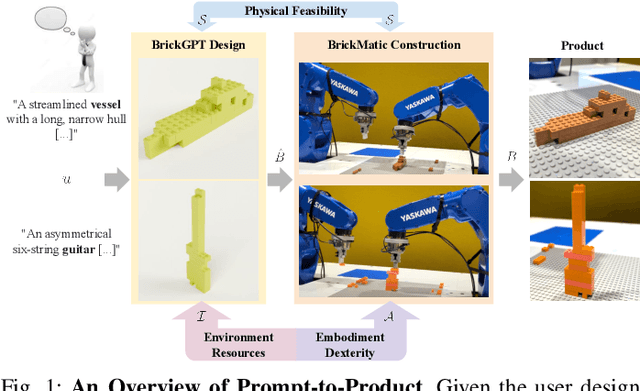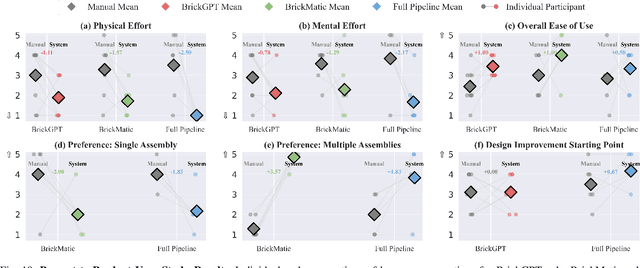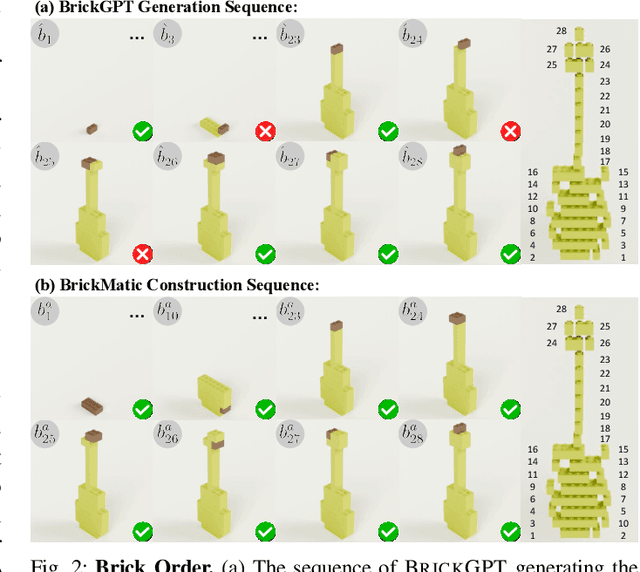Deva Ramanan
Towards Foundational Models for Single-Chip Radar
Sep 15, 2025Abstract:mmWave radars are compact, inexpensive, and durable sensors that are robust to occlusions and work regardless of environmental conditions, such as weather and darkness. However, this comes at the cost of poor angular resolution, especially for inexpensive single-chip radars, which are typically used in automotive and indoor sensing applications. Although many have proposed learning-based methods to mitigate this weakness, no standardized foundational models or large datasets for the mmWave radar have emerged, and practitioners have largely trained task-specific models from scratch using relatively small datasets. In this paper, we collect (to our knowledge) the largest available raw radar dataset with 1M samples (29 hours) and train a foundational model for 4D single-chip radar, which can predict 3D occupancy and semantic segmentation with quality that is typically only possible with much higher resolution sensors. We demonstrate that our Generalizable Radar Transformer (GRT) generalizes across diverse settings, can be fine-tuned for different tasks, and shows logarithmic data scaling of 20\% per $10\times$ data. We also run extensive ablations on common design decisions, and find that using raw radar data significantly outperforms widely-used lossy representations, equivalent to a $10\times$ increase in training data. Finally, we roughly estimate that $\approx$100M samples (3000 hours) of data are required to fully exploit the potential of GRT.
Less is More Tokens: Efficient Math Reasoning via Difficulty-Aware Chain-of-Thought Distillation
Sep 05, 2025



Abstract:Chain-of-thought reasoning, while powerful, can produce unnecessarily verbose output for simpler problems. We present a framework for difficulty-aware reasoning that teaches models to dynamically adjust reasoning depth based on problem complexity. Remarkably, we show that models can be endowed with such dynamic inference pathways without any architectural modifications; we simply post-train on data that is carefully curated to include chain-of-thought traces that are proportional in length to problem difficulty. Our analysis reveals that post-training via supervised fine-tuning (SFT) primarily captures patterns like reasoning length and format, while direct preference optimization (DPO) preserves reasoning accuracy, with their combination reducing length and maintaining or improving performance. Both quantitative metrics and qualitative assessments confirm that models can learn to "think proportionally", reasoning minimally on simple problems while maintaining depth for complex ones.
Prompt-to-Product: Generative Assembly via Bimanual Manipulation
Aug 28, 2025



Abstract:Creating assembly products demands significant manual effort and expert knowledge in 1) designing the assembly and 2) constructing the product. This paper introduces Prompt-to-Product, an automated pipeline that generates real-world assembly products from natural language prompts. Specifically, we leverage LEGO bricks as the assembly platform and automate the process of creating brick assembly structures. Given the user design requirements, Prompt-to-Product generates physically buildable brick designs, and then leverages a bimanual robotic system to construct the real assembly products, bringing user imaginations into the real world. We conduct a comprehensive user study, and the results demonstrate that Prompt-to-Product significantly lowers the barrier and reduces manual effort in creating assembly products from imaginative ideas.
MonoFusion: Sparse-View 4D Reconstruction via Monocular Fusion
Jul 31, 2025Abstract:We address the problem of dynamic scene reconstruction from sparse-view videos. Prior work often requires dense multi-view captures with hundreds of calibrated cameras (e.g. Panoptic Studio). Such multi-view setups are prohibitively expensive to build and cannot capture diverse scenes in-the-wild. In contrast, we aim to reconstruct dynamic human behaviors, such as repairing a bike or dancing, from a small set of sparse-view cameras with complete scene coverage (e.g. four equidistant inward-facing static cameras). We find that dense multi-view reconstruction methods struggle to adapt to this sparse-view setup due to limited overlap between viewpoints. To address these limitations, we carefully align independent monocular reconstructions of each camera to produce time- and view-consistent dynamic scene reconstructions. Extensive experiments on PanopticStudio and Ego-Exo4D demonstrate that our method achieves higher quality reconstructions than prior art, particularly when rendering novel views. Code, data, and data-processing scripts are available on https://github.com/ImNotPrepared/MonoFusion.
Activation Reward Models for Few-Shot Model Alignment
Jul 02, 2025Abstract:Aligning Large Language Models (LLMs) and Large Multimodal Models (LMMs) to human preferences is a central challenge in improving the quality of the models' generative outputs for real-world applications. A common approach is to use reward modeling to encode preferences, enabling alignment via post-training using reinforcement learning. However, traditional reward modeling is not easily adaptable to new preferences because it requires a separate reward model, commonly trained on large preference datasets. To address this, we introduce Activation Reward Models (Activation RMs) -- a novel few-shot reward modeling method that leverages activation steering to construct well-aligned reward signals using minimal supervision and no additional model finetuning. Activation RMs outperform existing few-shot reward modeling approaches such as LLM-as-a-judge with in-context learning, voting-based scoring, and token probability scoring on standard reward modeling benchmarks. Furthermore, we demonstrate the effectiveness of Activation RMs in mitigating reward hacking behaviors, highlighting their utility for safety-critical applications. Toward this end, we propose PreferenceHack, a novel few-shot setting benchmark, the first to test reward models on reward hacking in a paired preference format. Finally, we show that Activation RM achieves state-of-the-art performance on this benchmark, surpassing even GPT-4o.
ONLY: One-Layer Intervention Sufficiently Mitigates Hallucinations in Large Vision-Language Models
Jul 01, 2025Abstract:Recent Large Vision-Language Models (LVLMs) have introduced a new paradigm for understanding and reasoning about image input through textual responses. Although they have achieved remarkable performance across a range of multi-modal tasks, they face the persistent challenge of hallucination, which introduces practical weaknesses and raises concerns about their reliable deployment in real-world applications. Existing work has explored contrastive decoding approaches to mitigate this issue, where the output of the original LVLM is compared and contrasted with that of a perturbed version. However, these methods require two or more queries that slow down LVLM response generation, making them less suitable for real-time applications. To overcome this limitation, we propose ONLY, a training-free decoding approach that requires only a single query and a one-layer intervention during decoding, enabling efficient real-time deployment. Specifically, we enhance textual outputs by selectively amplifying crucial textual information using a text-to-visual entropy ratio for each token. Extensive experimental results demonstrate that our proposed ONLY consistently outperforms state-of-the-art methods across various benchmarks while requiring minimal implementation effort and computational cost. Code is available at https://github.com/zifuwan/ONLY.
UFM: A Simple Path towards Unified Dense Correspondence with Flow
Jun 10, 2025Abstract:Dense image correspondence is central to many applications, such as visual odometry, 3D reconstruction, object association, and re-identification. Historically, dense correspondence has been tackled separately for wide-baseline scenarios and optical flow estimation, despite the common goal of matching content between two images. In this paper, we develop a Unified Flow & Matching model (UFM), which is trained on unified data for pixels that are co-visible in both source and target images. UFM uses a simple, generic transformer architecture that directly regresses the (u,v) flow. It is easier to train and more accurate for large flows compared to the typical coarse-to-fine cost volumes in prior work. UFM is 28% more accurate than state-of-the-art flow methods (Unimatch), while also having 62% less error and 6.7x faster than dense wide-baseline matchers (RoMa). UFM is the first to demonstrate that unified training can outperform specialized approaches across both domains. This result enables fast, general-purpose correspondence and opens new directions for multi-modal, long-range, and real-time correspondence tasks.
RaySt3R: Predicting Novel Depth Maps for Zero-Shot Object Completion
Jun 05, 2025Abstract:3D shape completion has broad applications in robotics, digital twin reconstruction, and extended reality (XR). Although recent advances in 3D object and scene completion have achieved impressive results, existing methods lack 3D consistency, are computationally expensive, and struggle to capture sharp object boundaries. Our work (RaySt3R) addresses these limitations by recasting 3D shape completion as a novel view synthesis problem. Specifically, given a single RGB-D image and a novel viewpoint (encoded as a collection of query rays), we train a feedforward transformer to predict depth maps, object masks, and per-pixel confidence scores for those query rays. RaySt3R fuses these predictions across multiple query views to reconstruct complete 3D shapes. We evaluate RaySt3R on synthetic and real-world datasets, and observe it achieves state-of-the-art performance, outperforming the baselines on all datasets by up to 44% in 3D chamfer distance. Project page: https://rayst3r.github.io
Roboflow100-VL: A Multi-Domain Object Detection Benchmark for Vision-Language Models
May 27, 2025Abstract:Vision-language models (VLMs) trained on internet-scale data achieve remarkable zero-shot detection performance on common objects like car, truck, and pedestrian. However, state-of-the-art models still struggle to generalize to out-of-distribution classes, tasks and imaging modalities not typically found in their pre-training. Rather than simply re-training VLMs on more visual data, we argue that one should align VLMs to new concepts with annotation instructions containing a few visual examples and rich textual descriptions. To this end, we introduce Roboflow100-VL, a large-scale collection of 100 multi-modal object detection datasets with diverse concepts not commonly found in VLM pre-training. We evaluate state-of-the-art models on our benchmark in zero-shot, few-shot, semi-supervised, and fully-supervised settings, allowing for comparison across data regimes. Notably, we find that VLMs like GroundingDINO and Qwen2.5-VL achieve less than 2% zero-shot accuracy on challenging medical imaging datasets within Roboflow100-VL, demonstrating the need for few-shot concept alignment. Our code and dataset are available at https://github.com/roboflow/rf100-vl/ and https://universe.roboflow.com/rf100-vl/
RefAV: Towards Planning-Centric Scenario Mining
May 27, 2025Abstract:Autonomous Vehicles (AVs) collect and pseudo-label terabytes of multi-modal data localized to HD maps during normal fleet testing. However, identifying interesting and safety-critical scenarios from uncurated driving logs remains a significant challenge. Traditional scenario mining techniques are error-prone and prohibitively time-consuming, often relying on hand-crafted structured queries. In this work, we revisit spatio-temporal scenario mining through the lens of recent vision-language models (VLMs) to detect whether a described scenario occurs in a driving log and, if so, precisely localize it in both time and space. To address this problem, we introduce RefAV, a large-scale dataset of 10,000 diverse natural language queries that describe complex multi-agent interactions relevant to motion planning derived from 1000 driving logs in the Argoverse 2 Sensor dataset. We evaluate several referential multi-object trackers and present an empirical analysis of our baselines. Notably, we find that naively repurposing off-the-shelf VLMs yields poor performance, suggesting that scenario mining presents unique challenges. Our code and dataset are available at https://github.com/CainanD/RefAV/ and https://argoverse.github.io/user-guide/tasks/scenario_mining.html
 Add to Chrome
Add to Chrome Add to Firefox
Add to Firefox Add to Edge
Add to Edge